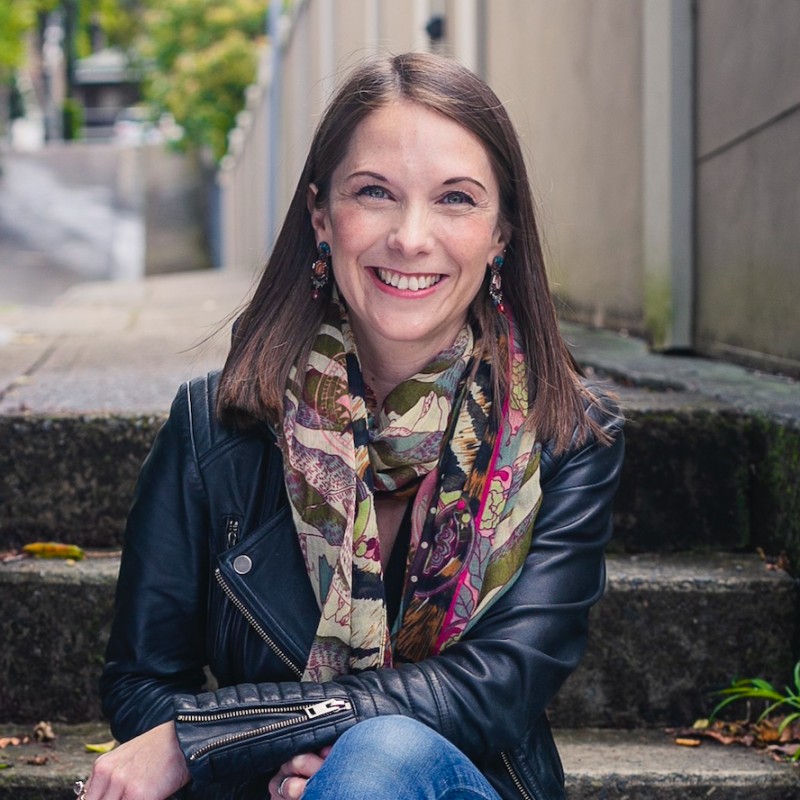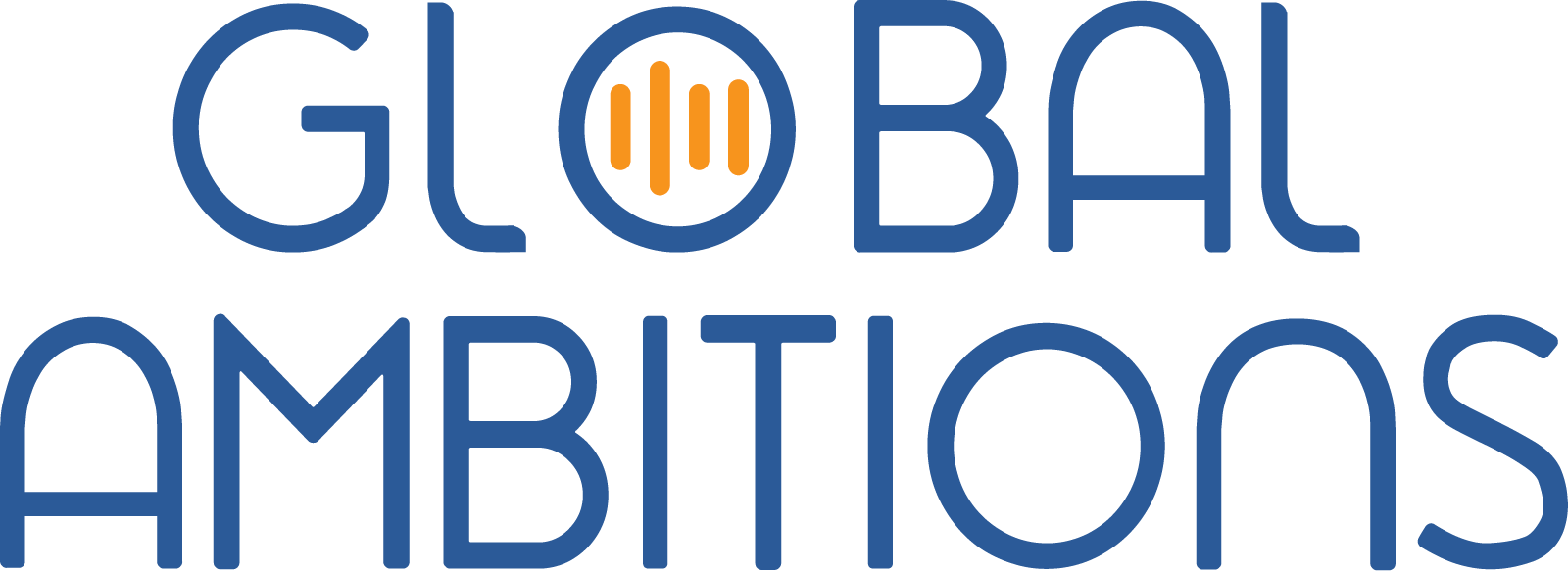With Melanie Heighway, Head of Internationalization at Atlassian
Below is an automated transcript of this episode
Stephanie Harris-Yee (Host): 0:21
My name is Stephanie and I’m your host today. This time we have a special episode with Melanie Heighway from Atlassian. Now, if you’ve been with us for a while, you might remember that Melanie was one of our very first guests on this show. We thought it was high time to check back in with her and see what’s going on in her world. Welcome back, Melanie.
Melanie Heighway (Guest): 0:41
Thank you so much. Thank you so much for having me again.
Stephanie Harris-Yee: 0:43
It was a delight the first time, very excited for the second time. Very excited to hear what you have to say and to hear your updates. So first off, let’s see what’s your role at Atlassian these days.
Melanie Heighway: 0:55
So my role hasn’t changed too much since we spoke about four years ago. Actually, I lead internationalization and product internationalization localization at Atlassian, and my team ensures that our products are available in over 20 languages, supporting our customers across the globe. We localize over 30 products and platform areas into 20 plus languages and we partner very closely with engineers, designers and product managers to embed internationalization into the product development life cycle. So my role these days is quite similar in that I am still driving strategy, scaling operations and ensuring that our processes are very efficient, automated and aligned with Atlassian’s growth goals. A significant part of my focus at the moment is around leveraging automation and AI to streamline our workflows and reduce our manual effort and deliver, you know, obviously high quality localized experiences at scale.
1:50
One of the major changes that has happened since I last spoke to you is that we have moved orgs. So I think when I spoke to you, my team was sitting in the go-to-market org and that’s right, and I was sitting next to the marketing localization team. Shortly after that, we moved into the trust engineering organization, so that was back over in R&D and what drove that change was that, although we really benefited from being in go-to-market and being alongside the marketing localization team, particularly in standardizing our tooling and our translators and our processes
2:24
We were too far removed from our stakeholders, particularly engineering, who we work the most closely with, and so we had a roadshow essentially to different R&D engineering leaders, product leaders, to figure out the right fit, and at that time we just started the trust organization. So that fit in really nicely with the vision for the trust org, which was very much around parts of the product that customers expect to be in the product by default, so things like security, reliability, also other teams like risk and compliance. So we were there for a couple of years and most recently we moved over to the Technical Program Management Org, the TPM Org, as we centralized our craft so we’ve moved alongside other teams that are program managers of other technical areas. So obviously very different to localisation but still running technical program management, and we’ve been there for around a year now. But that’s also within R&D and engineering as well. So the wonderful thing is that we can partner very closely with engineering and get that influence.
Stephanie Harris-Yee: 3:26
Wow. Well, that’s a lot of changes here and there through the organization. Well, I’m sure alongside that there have been big changes in the industry all of these different things in the past four years. So what’s kind of the most challenging thing that’s come across your plate in, say, the last 12 months?
Melanie Heighway: 3:42
In the last 12 months? Well, it has been a very interesting time since we did. Last week, obviously, OpenAI released ChatGDP I think it was November 2022. And that made huge waves in tech, but obviously in our industry as well. So, linked to that, I would say one of the most significant challenges that I’ve faced in the past year has been driving engineering and process efficiency, the rapid growth of Atlassian and also the explosion of tech and innovation. That’s happened globally and as the company scales as well, the demand for localisation services has dramatically increased and obviously with that comes that expectation of efficient and seamless processes.
4:21
Atlassian also has a very strong focus on clock speed as well as efficiency. You know, obviously it’s about customer experience, but it’s about making sure our processes are as efficient as possible. So for us, that has been, you know, transitioning from more manual kind of traditional style localization processes to more automated and even AI driven workflows or leveraging AI to help us with things that have been more manual in the past. Also, the challenge is, particularly in our industry, is keeping up with the sheer volume of localization words to be translated with a very lean team. You know we haven’t been able to keep up using manual methods, so the challenge is designing those processes and making sure that we keep that high bar for quality, but also making sure that these processes scale to adapt to our company’s needs.
Stephanie Harris-Yee: 5:08
So, as part of that challenge trying to meet the scaling as well as the automation and all these, do you have any particular steps that you did in order to kind of reach that and to maintain those high levels of quality?
Melanie Heighway: 5:21
Yeah. So the three areas we invested in to tackle these challenges automation number one. We’ve made significant strides in automating repetitive and time-consuming tasks. So, for example, when it comes to context gathering, even quality checks as well, so quality checks of the source English we do a lot of that. Even translators themselves, obviously they’re taking a very close view of it. They pick up a lot of mistakes that get through as well, particularly even just very small nuanced language mistakes. So leveraging linked scripts and so on to automatically parse our strings and do those checks, rather than have humans do that and then also post checks as well when the strings come out as well, identifying incorrect pluralization and whatnot. But for context gathering in particular, we’ve also made strides to semi-automate that as much as possible. Obviously, there’s only a level that you can get context automatically, so there’s still an element of manual process there. But we are making some great efforts and some great technology coming out in that area.
6:22
In terms of AI integration, we’ve had to spend a lot of time traditionally in the past going and gathering context or going back to individual engineers, even content designers, to gather context or have them rewrite strings that weren’t localizable. So using AI to gather context can be very useful. So even just within Atlassian systems, we use a robo a lot. If a string comes up, for example, we’re not sure what the context is, we can say what is the context of this product feature in Confluence or Jira, and it will be able to search our internal knowledge base and be able to come back with. This string is used here and this relates to this feature, which is so much faster than going and manually speaking to someone, so that’s been really helpful as well.
7:07
It’s also really helpful if a string has internationalization issues, particularly when it’s in a different language and it’s say quite gnarly, quite long, has nested plurals or something. Copy that into AI and say what’s the internationalization issue here and it can actually diagnose it very quickly. So that makes it a lot faster. You can also recommend what needs to be fixed so that we can easily have our engineering team give them instructions and have them fix that. And then, lastly, in terms of keeping a high bar, establishing standards with our teams, particularly with our content designer teams, creates the content and our engineering team as well about frameworks they need to use and best practices, but also forging those relationships, so being very visible in their orgs, going to their town hall meetings, getting to know them even. You know, anytime there’s a chance to meet in person, such as we’ve got an internal engineering conference, for example, next week, a lot of the teams still go into the office meeting up with them and just forging that great relationship, getting to build empathy for what we’re doing and ensure that they give us great strings to work with so that we can deliver a higher quality.
Stephanie Harris-Yee: 8:10
Well, that sounds like you have a lot of different areas that you have good steps on over the past 12 months. So if someone is maybe in a similar position, where they’ve had a lot of changes happening, they’re struggling with maybe just one of these areas or all of these areas do you have any recommendations on? Hey, this is a good tip for you. Try this.
Melanie Heighway: 8:32
Three things that I think I can think of here as well. Firstly, identify the most labor-intensive manual tasks. So, particularly, you know, when you’ve got a very lean team and you’ve got a lot of words to localize, look at your entire workflow and look at where there’s efficiencies to be gained. So say, for example, when it comes to context gathering, as we were talking about, always a big challenge in our industry. But automation can really alleviate that, whether it’s writing a script to catch localizability issues or it’s just automating routine and repetitive processes, just so that you have that free time to actually work on the more meaty and more impactful tasks. And then, on top of that, in terms of the time that you would gain back, I would really invest that into collaborating with your stakeholder teams, particularly with engineering.
9:21
One thing that we’ve found you know a lot of these manual tasks that we do, we obviously don’t just do them for fun. We’re doing them because they’re needed, particularly if the strings are coming to us and they’re not have localizability issues. They’re not localizable. We often, you know, go back and have those rewritten and whatnot. But by actually going back and working very closely with engineering so that you know we establish guidelines, we share, that we also educate them. We don’t get those errors in the first place. Otherwise you kind of find that you’re covering gaps and that isn’t particularly efficient for your team and also the business doesn’t know they have a problem if you’re covering the gaps. So making sure you have those partnerships and you’re educating those stakeholders to make sure that they can help you with what you’re doing, and then everybody will be successful.
10:05
And then, lastly, I’d say, making sure that you have robust data tracking so that you can actually see what you’re facing Like where am I localizing? Where’s the highest amount of volume that I’m localizing? Is it Confluence? Is it Jira? Oh, it’s over here. I wouldn’t have expected that for that product. Is that the highest priority that I should be working on? But even you know, looking at the usage in different regions, which is obviously very standard in our industry, to see, you know number of people who are viewing localized UI, but even just looking at the number of words that you’re localizing and revenue that’s coming in, any kind of data analytics that you can access is always really helpful, particularly when you’re trying to measure impact as well and make improvements. You want to know where you’re starting and what the goalposts could be, and that’s also a very compelling story to the business that you can tell in terms of saying, well, if you invest here, I can deliver this outcome, and by tracking the baseline and having the data there, that will help you do that.
Stephanie Harris-Yee: 11:02
Well, we’re coming close to the end of our time, so I do have one final question for you. With all of these changes that have been happening in the industry, do you have any thoughts on how localization leaders like yourself can really continue to thrive?
Melanie Heighway: 11:19
I think in today’s rapidly evolving industry, we all must embrace change and really stay on top of the great tech and innovation that’s coming out of our industry, really just to keep up with what our company needs from us. And, as we just talked about at the start of the recording, things are evolving very rapidly and so it’s really important, I think, to keep up with all the news. Talk to different companies providers, vendors, technology vendors talk about what they’re working on and what’s coming out. Going to webinars and conferences is really useful as well for those kinds of things as well, because essentially, we would need to tap into all of the resources that we have, all the tech that we have to keep up with speed that this industry is going at, tech in general, so definitely keeping up with the evolutions in our industry and scalability as well.
12:03
So companies are obviously expanding their global reach and it’s always really important to keep that in the back of your mind about how you scale this without compromising quality and keeping up with such a vast amount of volume with such a lean team. So making sure that you build flexible and robust processes that can adapt to the growing needs of your company and, obviously investing in scalable technologies and language service provider partners to help you reach those goals as well. Lastly, never stopping to push the strategic importance of localization internally as well. We always have to have that seat at the table an executive sponsor, and making sure that that’s at the top of people’s minds so that we can ensure that we’re fully built into the process and part of the process, because if you want to build global products, you have to be a part of the global process that the company is using. So definitely those three things would be the pieces of advice that I would give.
Stephanie Harris-Yee: 13:02
Wonderful. Well, thank you so much, Melanie. This has been truly a pleasure to have you back with us again.
Melanie Heighway: 13:05
Thank you, it’s been great to talk to you, thanks.





